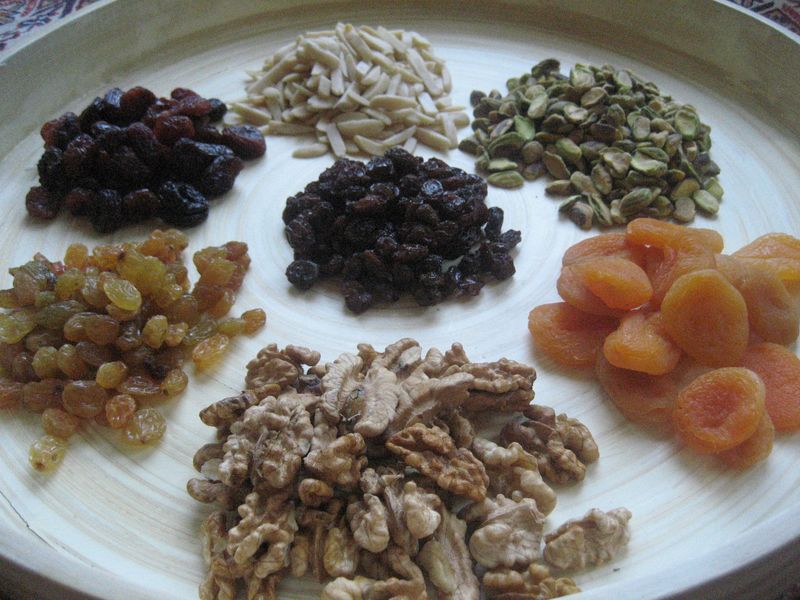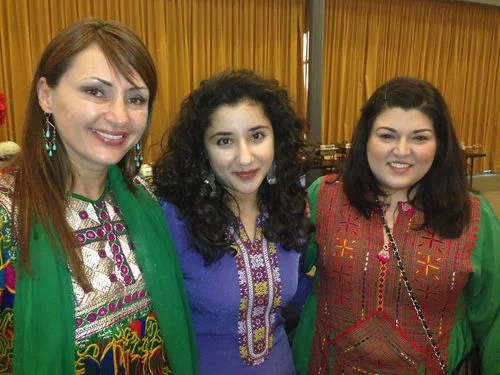By Humaira
Sal e Now Mubarak
Happy New Year
In the United States most people are familiar with “Nouroz” which is considered to be an exclusively Persian holiday from Iran.The truth is, what was originally a Zoroastrian festival is now celebrated in Afghanistan, Tajikistan, Kurdistan, the Indian Sub Continent and many other countries in the world.Although each country celebrates it a little differently, it always centers around a celebration of spring and the beginning of a new year. This year, March 20th marks the start of year 1393, a date based on Prophet Muhammad’s migration from Mecca to Medina in 622 BC.
People ask me about Afghan culture, customs and traditions all the time. I sometimes find it hard to answer such questions in a simple way. What makes it difficult to explain is that lot of our traditions and customs are influenced by religion, cultural traditions, provincial resources and of course each family’s traditions. So, I will tell you about Nowroz from my Afghan family’s perspective.
The first day of Nowroz or the Afghan calendar falls on the March equinox, the first day of spring. An equinox occurs when the sun crosses the celestial equator; day and night are of nearly equal length at all latitude. The March equinox generally occurs around March 21st, give or take a couple of days. Nowroz means new day in Dari, the language spoken in Afghanistan.
In Afghanistan the planning for Nowroz starts two weeks before the actual date. There are many preparations that go into celebrating the New Year and you guessed it, food is the most important part of the festivities.Afghan refugees around the world organize Nowroz celebrations that allows their communities to come together and celebrate. On Saturday I attended a Nowroz celebration organized by California State University, East Bay Afghan Students Association.
I have to admit, Nowroz was not a big holiday in my immediate family, but thanks to my extended family we got a great taste of it. Growing up Nowroz was always bittersweet because while I loved the food and the festivals, it also signaled the start of the school year. In Afghanistan children go to school from March to November, Saturday to Thursday. Next time your kids complain about school tell them Afghan children to go school six days a week. That should set them straight.
Afghan Nowroz Celebration 101:
There are many customs around Nowroz but here are the most common ones that I have experienced:
Haft Mewa:
My aunts’ preparation of a very special drink called Haft Mewa (seven fruits) was the highlight of Nowroz for me. Haft Mewa is essentially compote made from seven different dried fruits and nuts served in their own juices. Traditionally the seven ingredients are as follows: red raisins, black raisins, yellow raisins, senjid (the dried fruit of the oleaster tree), pistachio, dried apricot, and dried apple. The recipe for this dish is very flexible and now many people use walnuts, almonds and other dried fruit to make this yummy dish.
Samanak:
This is a special sweet made from wheat germ which requires several weeks of preparation. The custom is for women to gather, essentially a “girls’ night in” and prepare the dish from late in the evening until daylight, singing special songs. I was in Afghanistan the Spring of 2006. My cousin invited me to attend her Samanak party. At that time I didn’t have much interest in Afghan food so I declined. Instead I stayed in my guest house with my beer drinking, whiskey jugging travel mates. You can imagine how sorry I am for missing this wonderful opportunity.
Mela e Gul e Surkh:
It means the Red Flower Festival referring to the red tulip.It’s mainly celebrated in Mazar i Sharif in Northern Afghanistan where many people travel to experience the gorgeous flowers. However, I do remember tulips at our house and around town during the Now Roz celebration in Kabul and even to this day when I see tulips I think of the holiday.
Buzkashi:
I have to say the Buzkashi tournament ranks pretty high on my list of memories, perhaps as high as the Haft Mewa. Buzkashi is the Afghan national sport, similar to polo but we use…. are you ready…. a dead stuffed goat instead of a “ball”.
Special Food:
People cook SabziChallaw (spinach and rice) on the eve of Now Roze to welcome spring and a prosperous crop. Also, bakeries make Kulcha e Now Rozie a special rice cookie very similar to our recipe for butter cookies but decorated with beautiful colors in honor of the holiday.People also make or buy Mahi (fried fish) and Jelabi (fried sugar dessert) mostly eaten at picnics.
Festivals and Picnics:
There are many festivals celebrating spring and the upcoming crop.People go on picnics to enjoy the greenery, flowers and time with family. Of course, kite flying, a national pastime in Afghanistan, is at the center of all these outings.
There is much more to say but I will stop now.I am thrilled not only to share about my country and this rich festival but to give you the recipe for Haft Mew, my favorite Nowroz specialty enjoyed mostly during this celebration. I don’t think Katie loved it as much as I do but I think you should give it a try.
I decided to make Haft Mewa with ingredients purchased from Trader Joe’s, I found everything but rosewater.Actually, the rosewater is my own addition to the traditional recipe so you don’t have to use it. This is not a traditional recipe but it is very delicious and don’t fret about the ingredients. This is a very flexible recipe, just use dried fruit and nuts that you have in your pantry.
Afghan New Year Dried Fruit Medley
Haft Mewa
3/4 cup walnuts
½ cup pistachios
½ cup yellow raisins
1 cup red raisins
½ cup dried bing cherries (not sour cherries)
1 cup dried apricots (look for sweet ones)
½ cup blanched, slivered almonds
½ tsp. rosewater (optional)
5 cups cold filtered water
Large (at least 5 pints) lidded container with a wide mouth
Begin by blanching the walnuts and pistachios.Bring 3 cups of water to a boil, remove from the heat, add the walnuts and pistachios, cover and let it sit for 20 minutes. In the meantime in a large bowl add both kinds of raisins, cherries and apricots. Rinse three times in cold water to remove any residue.
When the nuts are ready, pour the hot water out and add cold water. That way you won’t burn your hands.Peel the skin off the nuts using the best method you can muster up.I must admit, the pistachios were a dream but the walnuts take patience, which I don’t have. I found if you have a whole walnut, break it in half and then start peeling.It really makes it easier. Give yourself around 20 minutes for this; perhaps recruit family members to help.Make sure all the skin is removed from the pistachios and the walnuts, no exception.
Add the dried fruit and the nuts to the container along with the rosewater and 5 cups of cold water. Stir well.The water should be at lead 1 inch above the ingredients. Refrigerate for 2-4 days. The longer you leave it the sweeter it gets. It will keep in the fridge for up to 7 days.
Serve in a bowl with its juices. I also think it would taste wonderful on vanilla or mango ice cream or plain yogurt.
Serves 6
*Special thank you to Wikipedia, various internet sites and Helen Saberi’s book Afghan Food and Cookery which served as my reference for creating this post.
Except where otherwise noted, all content on this blog is licensed under the Creative Commons Attribution-NonCommercial-NoDerivs 3.0 Unported license.







